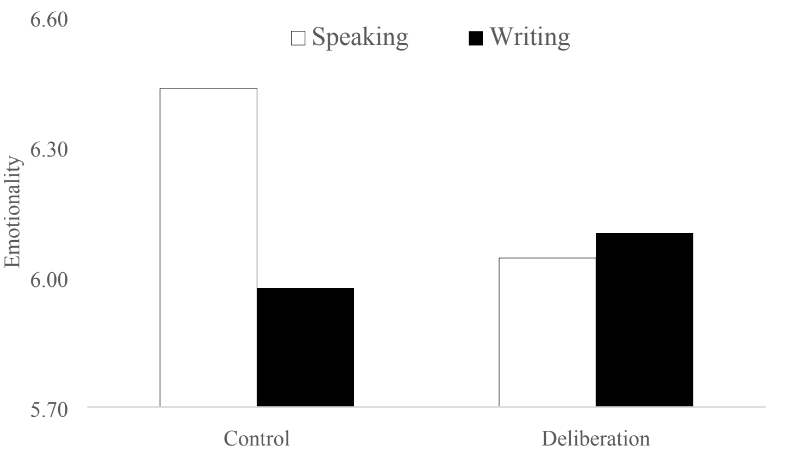What Works Best: The Spoken or Written Word?
We know that all fundraising writing or speaking should be conversational and personal. It should avoid long words, nouns, prepositions and adjectives that all make the copy feel dense. But which approach works best?
We’ve scored lots of copy and transcribed phone conversations that follow written scripts. Neither has an inherent legup on being conversational and personal.
But, not all phone conversations are the same. The telefundraiser and canvasser conversations score better on being personal and conversational the more the solicitors deviate from highly structured and overly scripted, scripts. It seems humans want to be conversational and personal but our writing style and process gets in the way.
But we also want communication to convey emotion. Does the written or spoken word have a legup here?
An analysis of customer reviews compared the same product or experience reviewed in written form (Amazon) vs. spoken (Youtube) and found a clear cut pattern, the spoken word is more emotional.

This is an apples to apples comparison since the product or service experience being reviewed is identical. The only difference is modality. This suggests the spoken word has an innate, leg up on written word for emotionality. And since this analysis is only looking at the spoken words as transcribed, it likely under-represents that innate advantage because tonality and body language are great ways to further convey emotionality but whose impact is missing from the bar chart.
But why? Why is even the transcribed spoken word more emotional than it’s cousin that started its “life” as written?
The research also answers this question with subsequent experimental testing that included asking about state of mind and evaluating passive traits like time spent producing the review.
In summary, writing loses to its transcribed cousin because it’s done as a more deliberative process. Our thinking and taking more time is making the content less emotive.
In a clever, experimental twist researchers instructed those in the speaking and writing condition to think more about their review and be more deliberative. You can see the control with no such instruction and a marked falloff in emotionality for verbal reviewers instructed to be more deliberate and no statistical difference for the writing condition across control and test.

Implications and recommendations?
- This helps explain why the phone and F2F work so well; and with conversion rates that make acquisition mail or digital email click rates blush. Having said that, not all phone and F2F are equal. If canvassers and telemarketers are being lobotomized with unnatural, unemotional, dense scripts the innate advantage of spoken goes away.
- Your donor service team lives on the razor’s edge of emotionality as that emotion can be positive or negative. If a particular supporter interaction turns negative over the phone it may be best to extricate the donor service member from that verbal exchange as soon as feasible and send a more deliberate, less emotional email response.
- Written copy lives in Lake Wobegon, everyone thinks their work product is above average. Nobody thinks their copy reads like an academic abstract devoid of story. We know with high certainty that most copy falls short on both of these goals – Personal and Story – as we score more and more text with our Copy Optimizer, linguistic tool. It’s a good bet much of that same copy probably also falls short on emotionality as the extra think time and re-drafting and editing makes it less ephemeral and visceral. Our suggestion is to undertake some conversational interviews with beneficiaries or those in the field. Record the conversation and transcribe it. Don’t edit their words. Cut and paste.
Kevin


